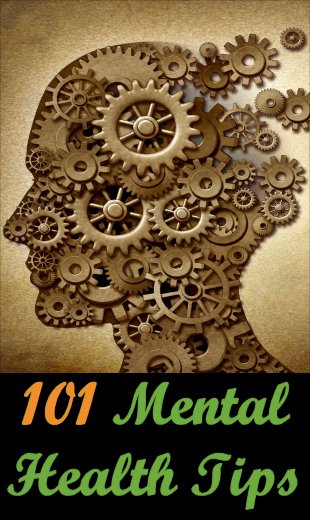How To Spot Signs Of ADHD In Boys, Girls, And Adults
Attention deficit hyperactivity disorder, usually shortened to ADHD, affects approximately 6% of children (which equates to about 1 in 16), as well as 4% of adults (which is about 1 in 25).
ADHD is often used interchangeably with ADD (attention deficit disorder), but there is a difference – ADD is ADHD without the hyperactivity component. Otherwise, they are remarkably similar, and, for the most part, this article will treat the two as being the same.
Statistically, boys are three times more likely than girls to be diagnosed with ADHD, and while symptoms usually appear between the ages of three and six, it is typically not diagnosed until a child is seven in the case of boys, and as late as twelve in the case of girls.
This article will look at the different signs and symptoms you may see, highlighting any differences between boys and girls, how puberty affects ADHD, and what it looks like in adults.
ADHD IN YOUNG CHILDREN
Let’s start with the general signs that a child may suffer from ADHD.
Concentration Issues
Children with ADHD often have problems focusing and concentrating, even when somebody is talking directly to them – unless it’s something that they find highly interesting.
They may, in fact, assure you that they’ve heard what you said to them, but that doesn’t mean they’ll be able to repeat what you said because they were probably somewhere else, in their head.
This lack of focus can also make it difficult for these children to pay attention to anything (e.g. in the classroom, or when doing their homework) for any length of time.
Difficulty Organizing And Prioritizing
Children suffering from ADHD may have trouble keeping track of what they need to do, which also results in finding it difficult to put those tasks in priority order.
Fidgeting
This may be one of the more common signs of ADHD – a constant need to fidget with things, and an inability to sit still, which may cause them to squirm in their chair, or even attempt to get up and run around.
Forgetfulness
This can range from forgetting to do things (e.g. household chores, homework), to not remembering where they put something, even though it may be important to them.
Inability To Recognize Other Peoples’ Needs
A child with ADHD will often appear to be focused entirely on themselves, with little to no regard for what others may need or want.
Impatience
Linked to their inability to recognize the needs of others (see below), children with ADHD may often have trouble waiting for their turn. This may apply in the classroom, say, or when playing with others.
Impulsive Behaviour
This may mean they guess at answers, rather than taking the time to work out the correct solution, act without thinking first, or saying the wrong thing at the wrong time.
Interrupting
Because of this self-focus, the child may interrupt others while they are talking.
They may also insert themselves into conversations (or games / play activities) that they were part of.
Inability To Control Their Emotions
A child with ADHD may display sudden outbursts of anger, and even what most people know as temper tantrums.
Making Careless Mistakes
Concentration issues can also cause children with ADHD to make careless mistakes, not because they aren’t smart or are lazy, but because they cannot focus on something for long periods of time.
Noisy Play
Because of their inability to be still, they may be unduly noisy when playing, either by themselves or with others. This can also happen when they are meant to be engaged in quieter activities.
Not Being Present
While some children with ADHD are loud and apparently unruly, not all children display these signs.
Others will look disengaged, maybe with a blank stare, looking at nothing in particular, and often daydreaming.
Not Finishing What They Start
Again, this is classic ADHD – they may start doing something, but the chances of them ever finishing it are slim because they are extremely like to be distracted by something else before they complete the task or activity.
DIFFERENCES BETWEEN ADHD IN YOUNG BOYS AND YOUNG GIRLS
When it comes to boys, they are more likely to:
- act out
- be aggressive
- be hyperactive
- be impulsive
- be inattentive
- lack focus
Girls, on the other hand, tend to:
- be messy and disorganized
- be excessively emotional or sensitive (e.g. to noise), crying frequently
- be less obviously hyperactive (e.g. doodling)
- be verbally aggressive (e.g. name-calling, taunting, teasing) and impulsive
- be withdrawn
- change their focus more often
- daydream
- exhibit shyness
- forget things
- have trouble finishing assignments on time
- have trouble paying attention
- interrupt
- suffer from anxiety and low self-esteem
- talking non-stop
ADHD DURING PUBERTY
The key thing that changes during puberty is, of course, hormones.
For boys, the increase in testosterone can lead them to take greater risks, which can translate to, for example, experimenting with drugs, or even substance abuse, as well as criminal behaviour.
You may also notice an air or rebellion – perhaps they refuse to take their medication like they used to – because they want to fit in with their (non-ADHD) peers.
This may go as far as being adversarial, antisocial, and hostile.
For girls, on the other, their hormonal changes (e.g. estrogen and progesterone) lead to different issues, on the whole.
For example, while they too may display more aggressive behaviour, and have substance abuse problems, they may also have more academic problems.
Girls will often internalize the problems caused by their ADHD, making it hard to spot when something is wrong.
One side-effect of girls’ hormonal changes is that it can make some ADHD medication less useful.
In terms of a girl’s menstrual cycle, there is a hypothesis that females suffering from ADHD have more severe PMS / PMT, with a potentially increased risk of anxiety and depression.
In addition, brain fog can occur during the fourth week of the cycle.
Discuss different medications — or different dosages of current medications — with your daughter’s doctor. It may take time to figure out what works best, so be patient.
ADHD IN ADULTS
Many of the signs you’ll see are similar to those experienced by children, but with a few nuanced differences, including:
- being distracted by non-important things
- exhibiting poor attention to detail
- having a cluttered brain, where there are simply too many thoughts to keep track of
- easily getting bored
- feeling stressed
- getting flustered easily
- inability to take criticism (of any type)
- irritability
- jumping from one activity to the next, before, of course, the first one is completed
- lacking self-control
- not allocating enough time to complete tasks
- often being late
- procrastinating
CO-MORBIDITIES
While there is no evidence (yet) that having ADHD causes other behavioural or emotional problems, the evidence does suggest that people with ADHD are more likely to experience or or more other problems, including:
- anxiety
- bed-wetting
- bipolar disorder
- conduct disorders and difficulties, including antisocial behavior, fighting, and oppositional defiant disorder
- depression
- learning disabilities
- sleep disorders
- substance abuse
- Tourette’s syndrome
Conclusion
When I was young, nobody had even heard of ADD or ADHD, but I’m pretty sure if they had, I would have been diagnosed with one of these two related conditions – I meet many of the criteria detailed above.
As with other “checklists” relating to mental health problems (because that’s what ADHD is), then the more of the signs you recognize (e.g. in yourself or your children), the more likely it is that they do indeed suffer from ADHD.
Of course, a trained medical professional should be your next stop should you suspect a problem – they will be able to offer an objective diagnosis, and an appropriate treatment plan (since ADHD affects different people in different ways).
Additional Resources
These are suggestions for those who wish to delve deeper into any of the above:







